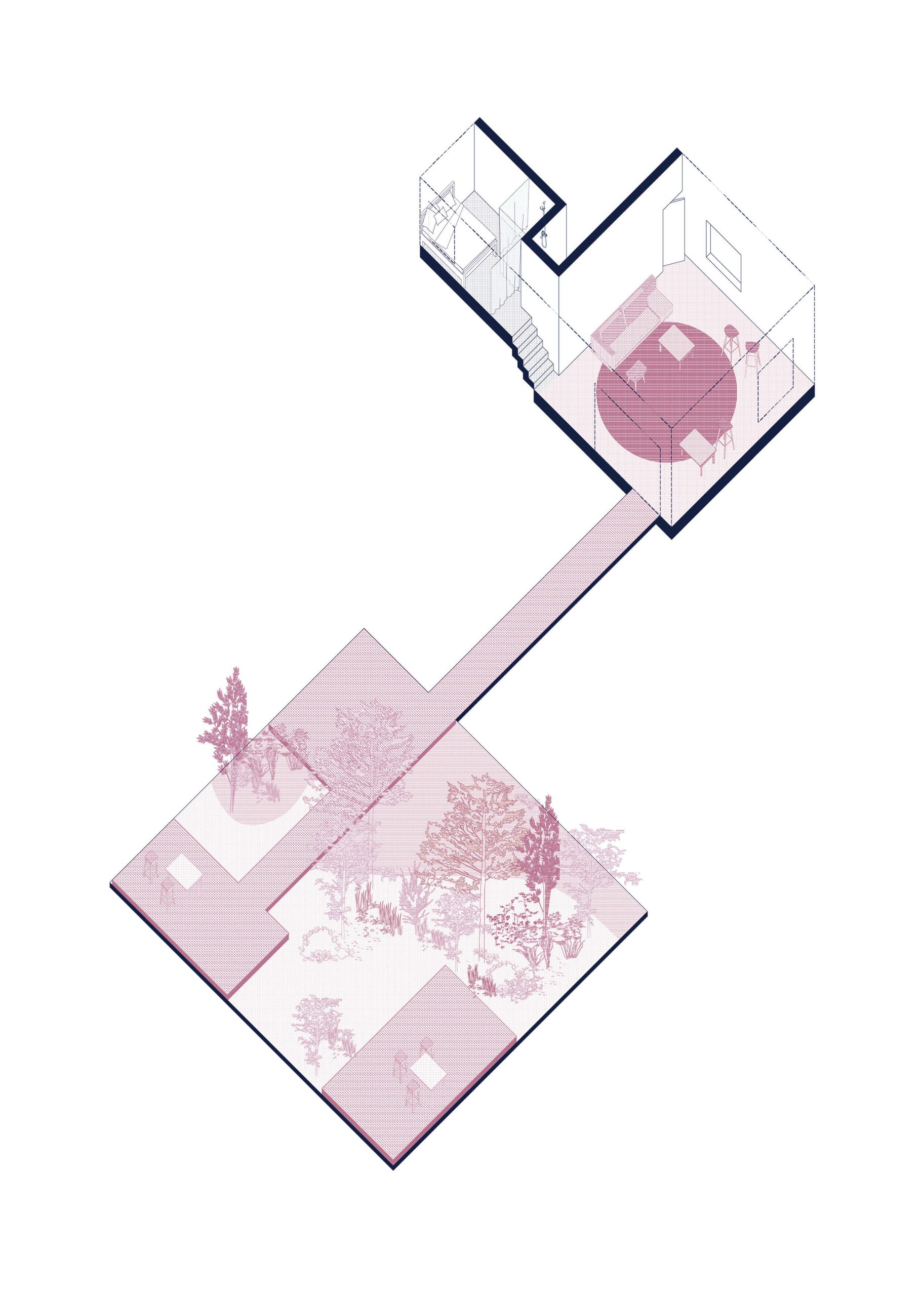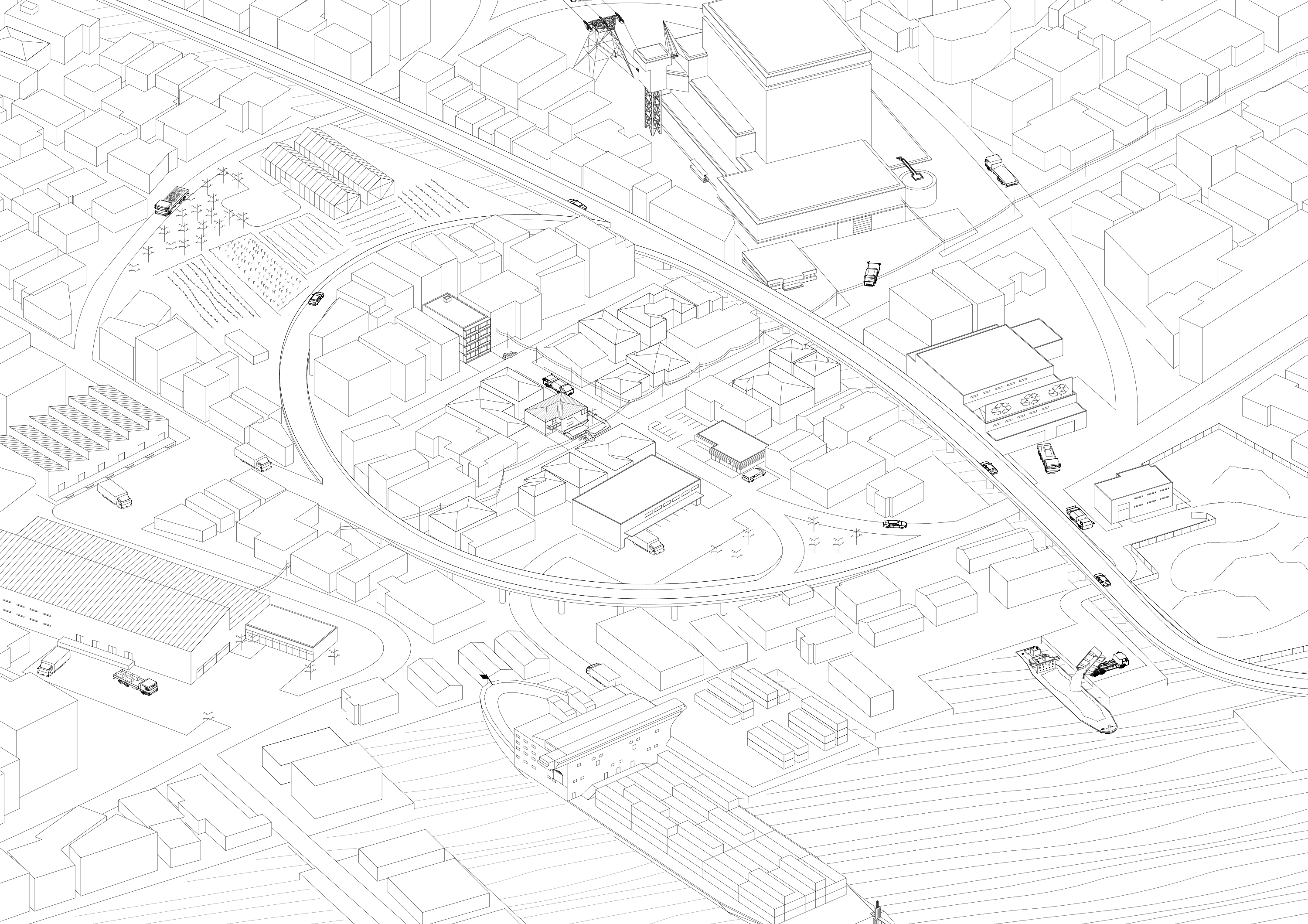TETRIS TERRACE
The block including the site locates right in the south from Jiyugaoka Station. The site con- sists of two types of void following our classify; courtyard type and rooftop type.
The former is in the middle of the block and now used as a parking lot, having potential to be built something. The latter is rooftops of surrounding building which are left unused yet have various places with different level.
In addition, the site is in between two areas, commercial and residential. So it would fit to the program of accommodation.
We made unused rooftops parts of architec- ture. Then we built a volume in the courtyard type void. Depending on the charcteristics of the rooftop terraces, we deformed daily life and gave a specificities to 7 each rooms.
In this way, we formed each room as a set of a inside room and a rooftop terrace. In order to make the architecture a benchmark, we designed a rectangular volume of reignforced concrete structure with minimal facade, yet complex with different form of rooms and a staircase inside. The architecure hence looks seemingly very simple, however, consists of different characters of rooms with full of un- predictability.
Student: Ossi Kunnas
Waste Disposal
While in the early Meji Period the disposal of waste was part of a spatially limited and circular network, linking agricultural fields with markets and houses, and from there, when not recycled, again to the fields, the economic and demographic growth of the post-war period, especially in Tokyo, saw the introduction of public waste collection, primarily disposed of in landfills. This unilinear processing from production to consumption began to be increasingly called into question, starting in the mid-1980’s with the introduction of a new recycling system involving an evermore refined rubbish separation for recyclable goods, the exploitation of mix-waste for energy in large power stations, and hazardous waste being exported and reprocessed overseas. The waste-management system has thus evolved into a large, complex, and sometimes invisible chain involving multiple actors. Waste is no longer perceived as either a purely homogenous and useful resource or solely as landfill material, but rather as consisting of different constituents with varying values and repurposing potentials.
Fire Escape
Open fire-escape stairs are a common and distinguishing feature in multistory buildings in Japan. Their primary purpose—to allow rapid and safe evacuation in case of emergency—seems perfectly inscribed in their position, shape, and materiality, yet the behaviors that take place transcend them by far: be it as a viewing platform accessible to outsiders; be it as an indoor area in high-density urban residences where the inhabitants casually use the stair as an extension of their living space or practice mutually accepted domestic activities; or be it as an ambiguous realm in the house, neither inside nor outside, where intimate, emotional, dramatic, and mysterious events can happen.

